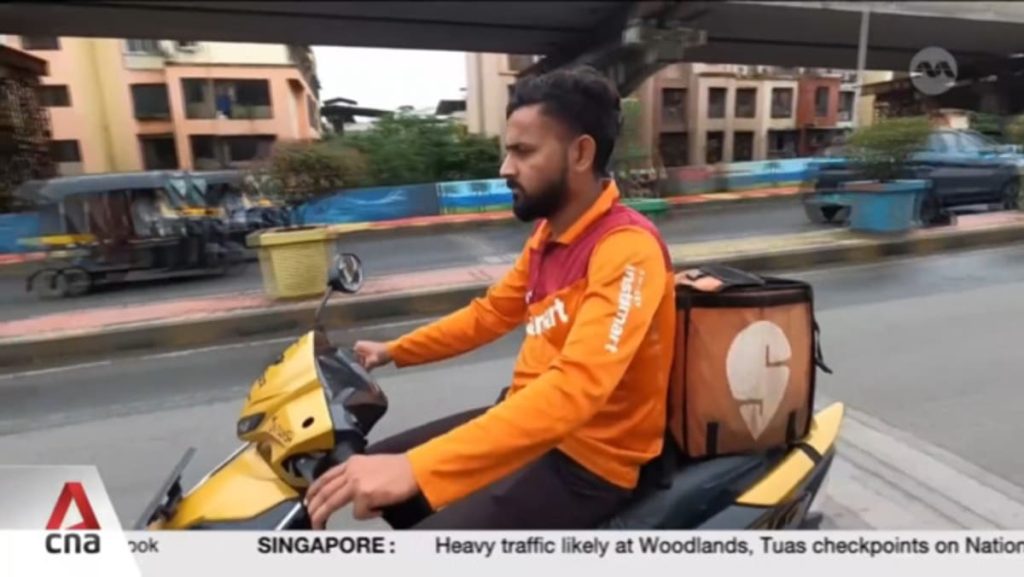In recent years, grocery delivery apps in India have become increasingly popular among urban consumers. These apps offer the convenience of ordering groceries online and having them delivered to their doorstep in 10 minutes or less. This has transformed the way people shop for groceries, as they no longer need to visit physical stores and can instead have their essentials brought to them with just a few taps on their smartphones. The rapid expansion of these services has not only provided added convenience to consumers but has also created jobs in the delivery and logistics sector. However, this trend has also had a negative impact on traditional mom-and-pop stores, which have historically dominated the grocery retail landscape in India. As more customers turn to these quick delivery apps, traditional stores are seeing a decline in business and are struggling to compete with the convenience and efficiency of online grocery shopping platforms.
The convenience of quick grocery delivery apps has been a major selling point for urban consumers in India. With busy lifestyles and limited time to spare, many people appreciate the ability to have their groceries delivered to their doorsteps within minutes. This has led to a significant increase in the popularity of these apps, as more and more people opt for the convenience of online shopping over traditional brick-and-mortar stores. In addition to saving time, these apps also offer a wide range of products and brands to choose from, allowing customers to easily find what they need without having to search through aisles of products at a physical store. This level of convenience has become a major draw for urban consumers, who are increasingly turning to technology to simplify their daily tasks and streamline their shopping experience.
While the rise of quick grocery delivery apps has been beneficial for consumers, it has had a negative impact on traditional mom-and-pop stores in India. These small, independent retailers have long been a staple of the country’s grocery retail landscape, serving local communities and offering personalized service to their customers. However, the convenience and efficiency of online grocery shopping platforms have led many consumers to switch their allegiance from traditional stores to these digital platforms. As a result, mom-and-pop stores have seen a decline in foot traffic and sales, as more and more customers opt for the speed and convenience of quick delivery apps. This has put a strain on these small businesses, which are struggling to compete with the resources and technology of larger online retailers. Many traditional stores have been forced to adapt to the changing consumer preferences by offering their own delivery services or partnering with online platforms to reach a wider customer base.
The rapid expansion of quick grocery delivery apps in India has also had a positive impact on the job market, creating new opportunities in the delivery and logistics sectors. As these apps grow in popularity and demand increases, the need for delivery drivers and support staff has also risen, providing employment opportunities for many people. This has helped to boost the economy and provide job opportunities for individuals who may have been previously unemployed or underemployed. The rise of these apps has also created new business opportunities for entrepreneurs looking to enter the online retail sector, driving innovation and competition in the market. Overall, the growth of quick grocery delivery apps has had a ripple effect on the economy, creating jobs and driving growth in related industries.
Despite the benefits of quick grocery delivery apps, there are also concerns about the impact they are having on traditional stores and retailers in India. Many mom-and-pop stores are struggling to compete with the convenience and efficiency of online platforms, leading to a decline in business and financial hardship for these small businesses. This has raised questions about the long-term viability of traditional stores in an increasingly digital and tech-driven retail landscape. There are also concerns about the potential loss of community connections and personalized service that mom-and-pop stores provide, as more customers opt for the speed and convenience of online shopping over traditional brick-and-mortar stores. These challenges highlight the need for a balance between the convenience of online platforms and the importance of supporting local, independent retailers to ensure a diverse and vibrant retail ecosystem in India.
In conclusion, the rise of quick grocery delivery apps in India has reshaped the way urban consumers shop for groceries, offering convenience and efficiency unmatched by traditional brick-and-mortar stores. While these apps have provided added convenience and created jobs in the delivery and logistics sectors, they have also had a negative impact on traditional mom-and-pop stores, which are struggling to compete with the speed and efficiency of online platforms. The growth of quick grocery delivery apps has raised questions about the long-term viability of traditional stores in India and the importance of maintaining a diverse and vibrant retail ecosystem. As the retail landscape continues to evolve, it will be essential for policymakers, businesses, and consumers to find a balance between the convenience of online platforms and the importance of supporting local retailers to ensure a thriving and sustainable retail sector in the country.













